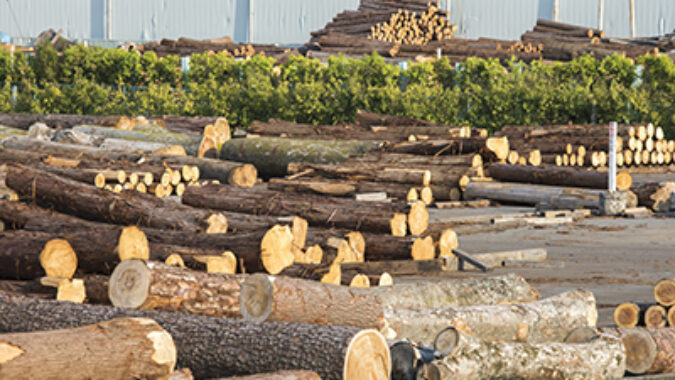The meteoric rise in lumber prices over the past 12 months has added $35,872 to the average cost of a new single-family home, according to the National Association of Home Builders. Now economists are predicting that lumber shortages and high prices will continue for another year or two.
Experts say supply and demand is at the root of the problem. Demand for lumber skyrocketed in the summer and fall of 2020 as low mortgage interest rates enticed more homebuyers into the market, spurring new housing construction. Meanwhile, existing homeowners who were unable to take vacations during the pandemic were spending more time and money on home remodeling projects.
While the demand for lumber was soaring, pandemic related labor shortages at sawmills had slowed production and impacted the supply. The national shortage of truck drivers needed to get logs to the mills compounded the supply shortage.
There are also fewer sawmills today in the U.S. than a decade or two ago. Supply Chain Dive notes that during the Great Recession of 2008, when the housing market went bust, 30 major U.S. sawmills closed for good. Fires in the Pacific Northwest have also wiped out potential stock and the 2017 tariffs on Canadian lumber have driven up the cost of imported timber.
Mark Vitner, managing director and senior economist at Wells Fargo, tells Supply Chain Dive he suspects extended unemployment benefits and federal stimulus payments have contributed to the labor shortage plaguing the remaining U.S. sawmills, but that should resolve itself by the end of the year. However, he still expects lumber prices to remain high into 2022.
Other economists think lumber prices will remain high for at least the next two or three years, and only drop as demand falls.
“At some point, most of the people who can take advantage of low mortgage rates will already have bought a house,” writes business economist Bill Connerly in Forbes. “And interest rates will eventually rise. By the end of 2023, the strong increase in demand for housing will be over. At that point, lumber and plywood sales will drop to more normal levels.”




